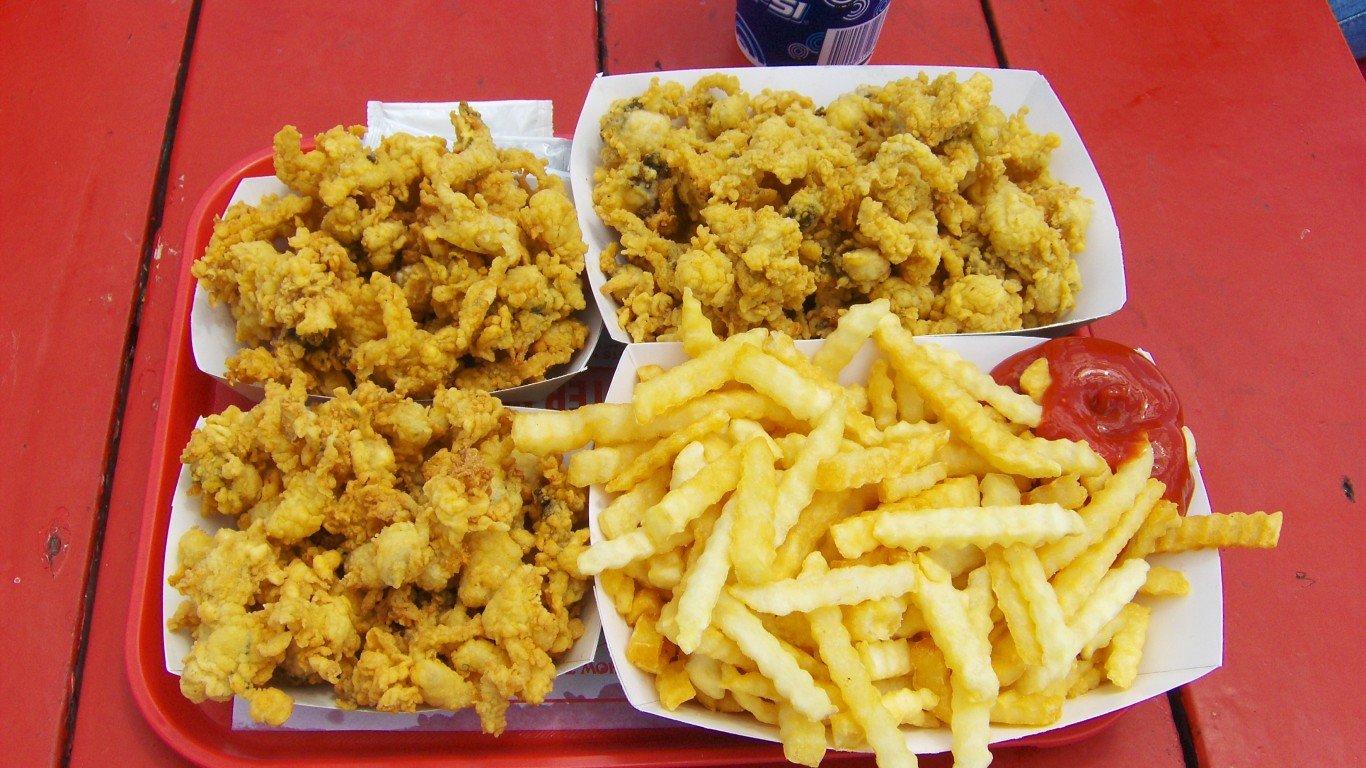According to the National Oceanic and Atmospheric Administration, a bureau within the U.S. Department of Commerce, Americans consumed about 6.3 billion pounds of seafood in 2019, the last year for which data is available. While American fisheries bring in substantially more than that, we also export huge quantities of fish and shellfish, and an estimated 70-85% of what we eat is imported from other countries.
Nonetheless, our coastal waters are teeming with seafood. The Pacific Northwest is known for its King and Dungeness crabs, oysters, salmon, and spot prawns, as well as an array of whitefish varieties (especially in Alaska), while the New England coast is famous for its lobsters, clams, scallops, haddock, and cod. In the Mid-Atlantic, blue crab and flounder are king, while the Gulf Coast boasts crawfish, shrimp, snapper, grouper, and tuna. (See which varieties are, for reasons of health or the environment or both, some of the worst seafood you can eat.)
With the plethora of seafood available in the U.S., it’s no surprise that there are myriads of iconic dishes, often synonymous with each region’s cuisine. Dishes like New England clam chowder, Maryland crab cakes, shrimp Creole, and Hawaiian poke have deep roots in their respective birthplaces.
To compile a list of 25 iconic American seafood dishes, 24/7 Tempo consulted numerous books and websites dedicated to seafood and to regional culinary specialties. In recommending restaurants that serve the dishes in question, we consulted reviews and rankings on websites including Taste Atlas, Eater, Time Out, and Eat This Not That. Note that the images that follow don’t necessarily represent the dish as served at the recommended restaurant.
Most of these dishes were invented in the U.S. – from Hawaii to California to New York – but many are also influenced by the cooking traditions of immigrants from Japan, Italy, Mexico, France, Portugal, and more as well as from indigenous peoples of the Americas. (Take a look at 20 iconic Italian seafood dishes you should know.)
Whatever their origins, these seafood preparations reflect not only the abundance of our waters but the variety and imagination of America’s cooks.
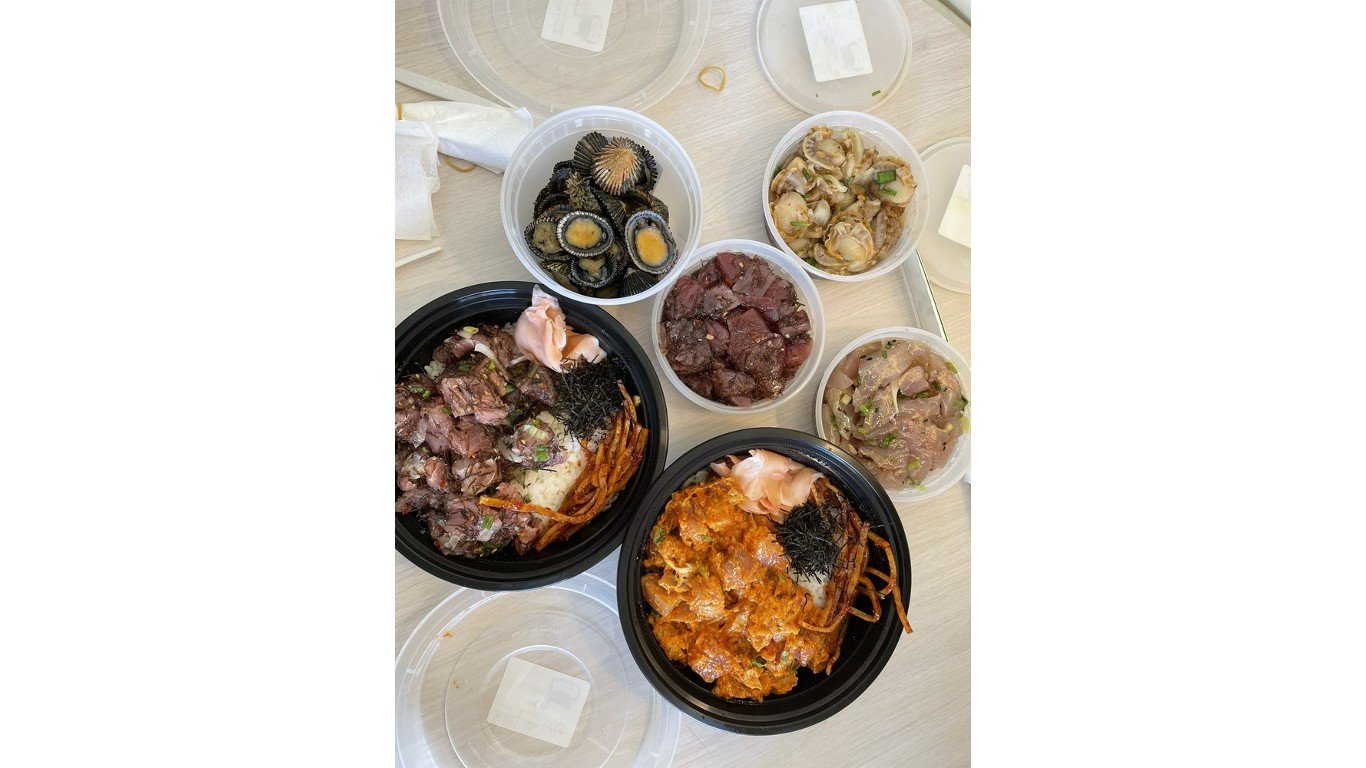
Poke
> What it is: Raw tuna or other fish, usually in a bowl, with various vegetables, condiments, and spices
> Where it originated Hawaii
> Where to try it: Tamashiro Market, Honolulu (Oahu), Hawaii
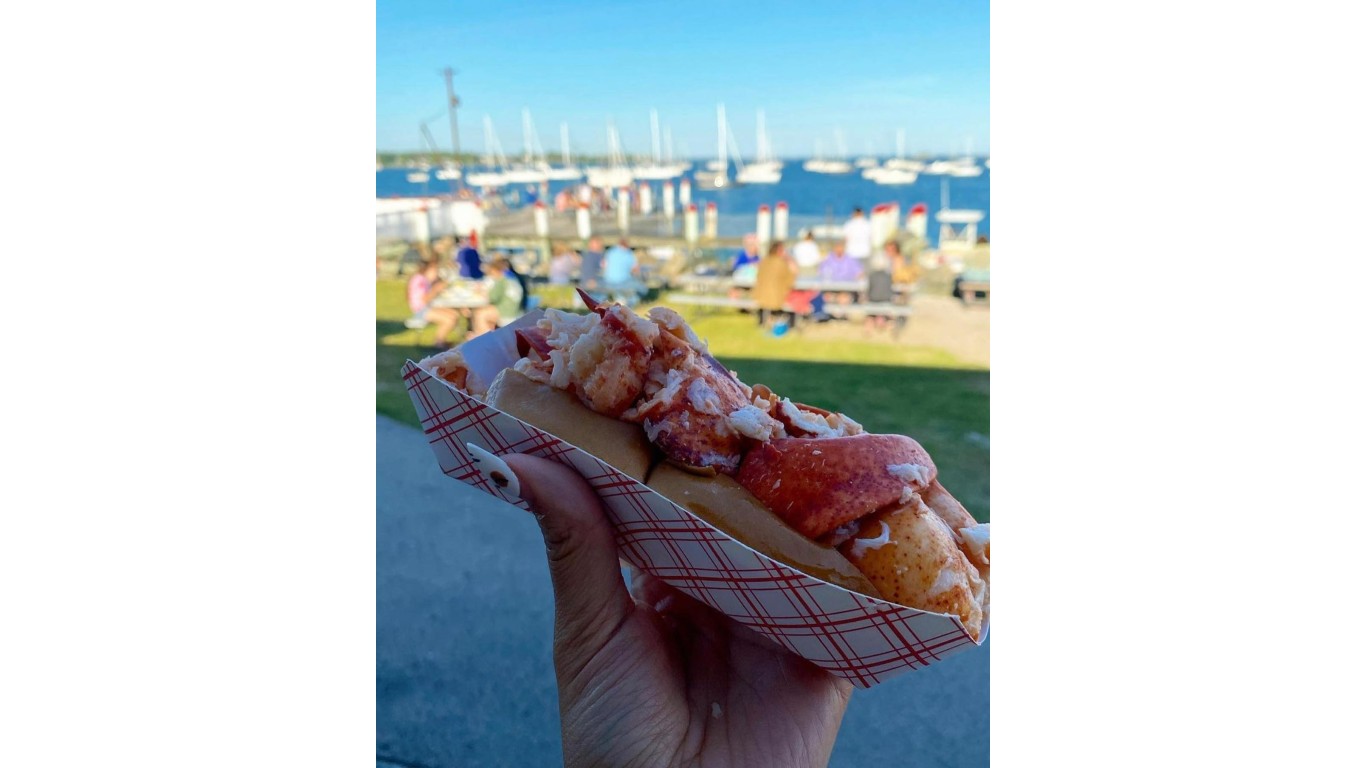
Lobster roll
> What it is: Lobster meat mixed with mayonnaise and served cold in a split-top bun (New England style) or served warm with butter (Connecticut style)
> Where it originated Possibly Perry’s in Milford, Connecticut (1927)
> Where to try it: New England style: McLoon’s Lobster Shack, South Thomaston, Maine (seasonal); Connecticut style: Abbott’s Lobster in the Rough, Noank, Connecticut (seasonal)
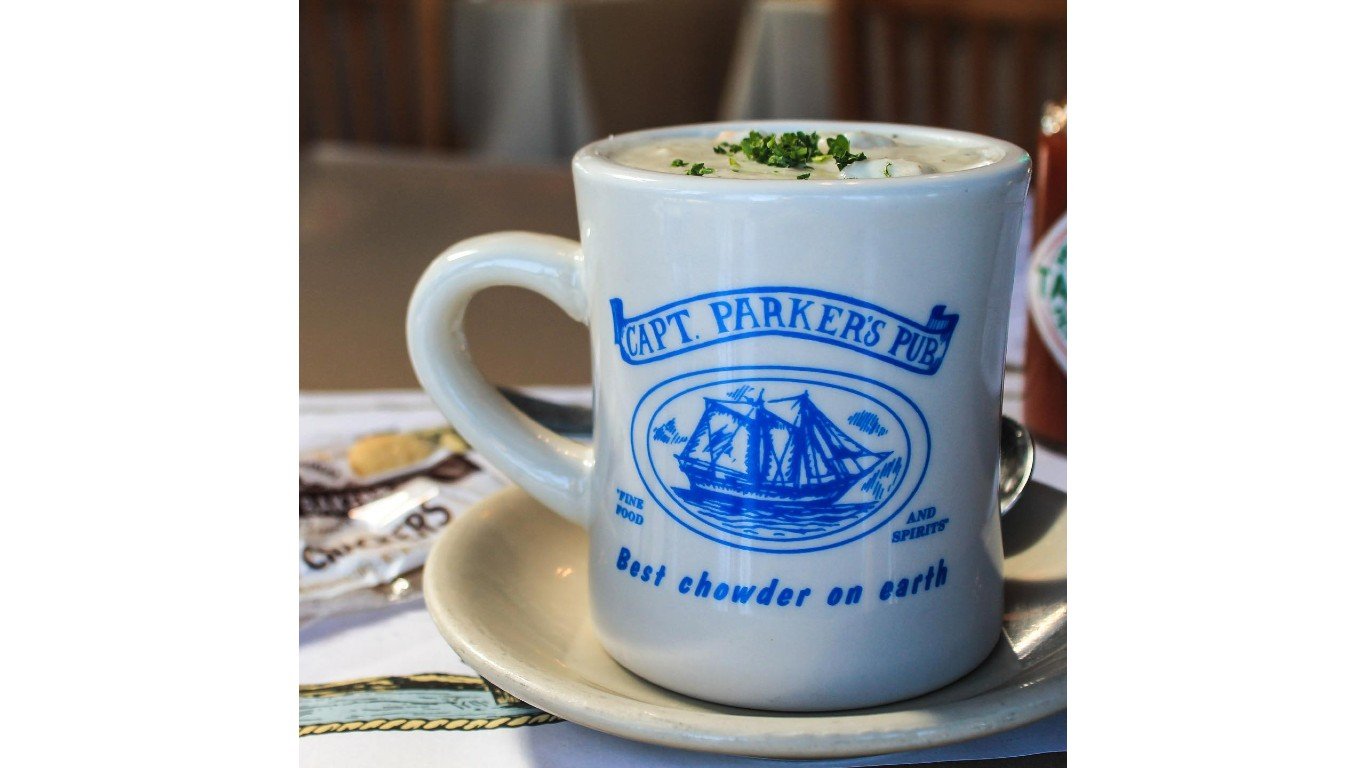
Clam chowder
> What it is: Dense soup of clams, potatoes, and salt pork (New England style) or clams in a soup with a tomato base (Manhattan style)
> Where it originated New England or French Canada
> Where to try it: New England style: Captain Parker’s Pub, West Yarmouth, Massachusetts; Manhattan style: Grand Central Oyster Bar, New York City, New York
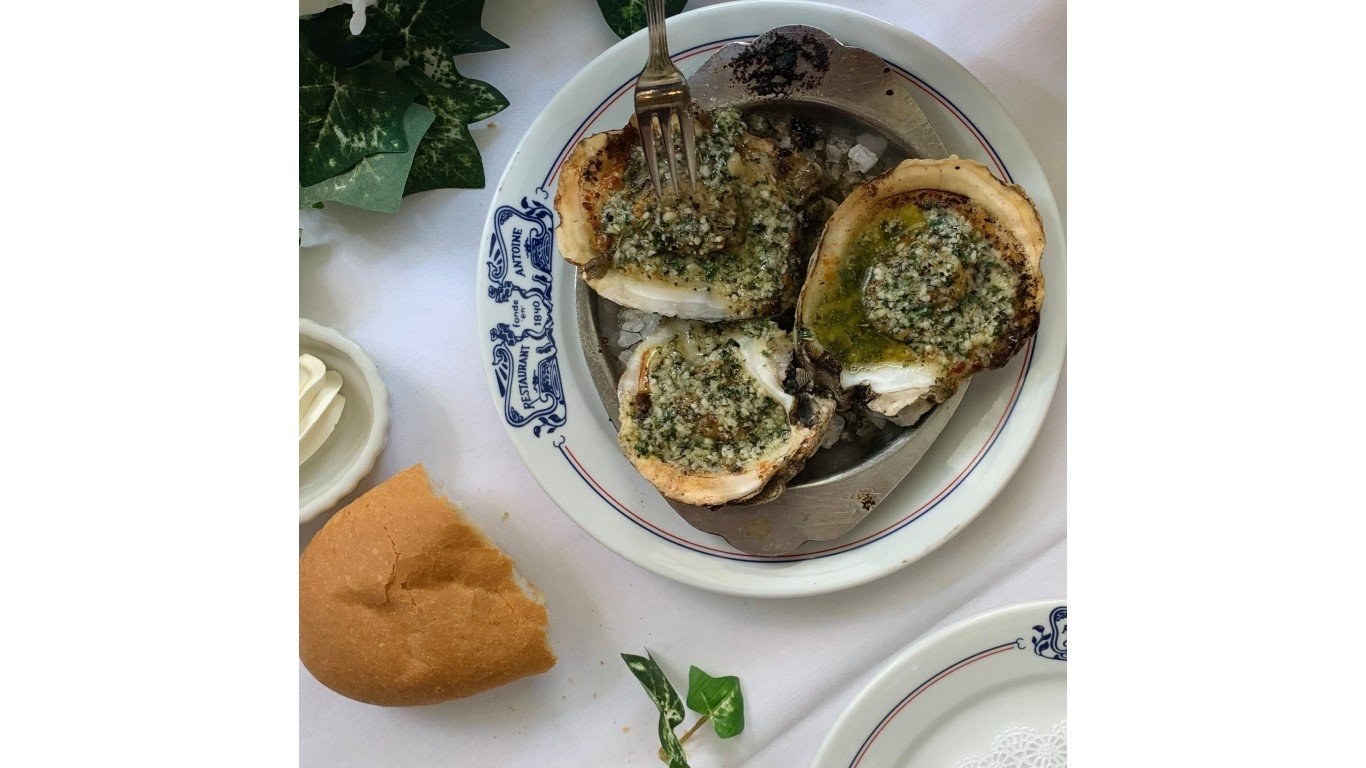
Oysters Rockefeller
> What it is: Oysters on the half-shell baked with butter, spinach and/or green herbs, and bread crumbs
> Where it originated Antoine’s in New Orleans (1889)
> Where to try it: Antoine’s, New Orleans, Louisiana

Fried catfish
> What it is: Catfish filets typically soaked in buttermilk then dredged in cornmeal before frying
> Where it originated Unknown
> Where to try it: Taylor Grocery, Taylor, Mississippi
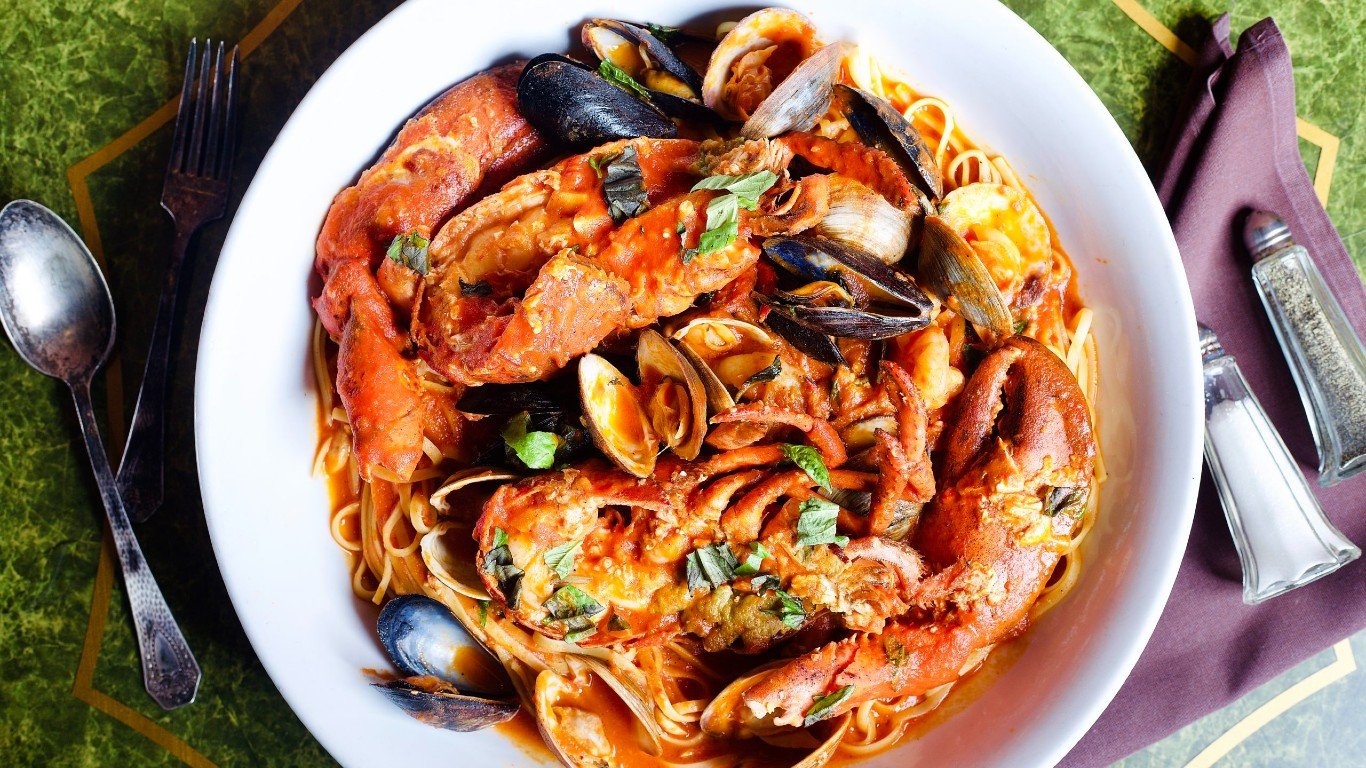
Lobster Fra Diavolo
> What it is: Italian-American dish of lobster pieces in spicy tomato sauce, served over pasta
> Where it originated Probably Little Italy in New York City (1940s)
> Where to try it: Nico Ristorante, Boston, Massachusetts
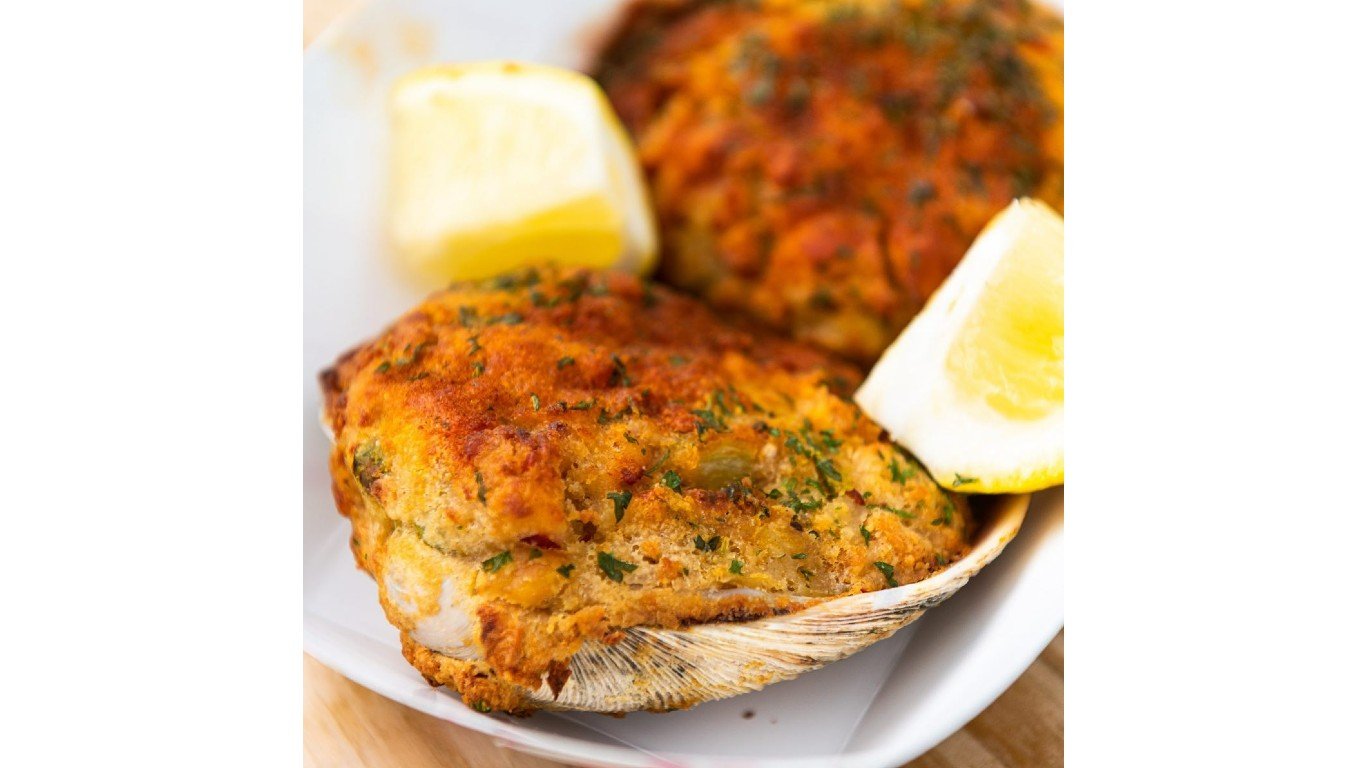
Stuffies
> What it is: Large clams, usually quahogs, removed from the shell, chopped, and mixed with breadcrumbs and other ingredients, then gratinéed
> Where it originated Portuguese or Italian immigrants in Rhode Island
> Where to try it: Iggy’s Doughboys and Chowderhouse, Warwick and Narragansett, Rhode Island
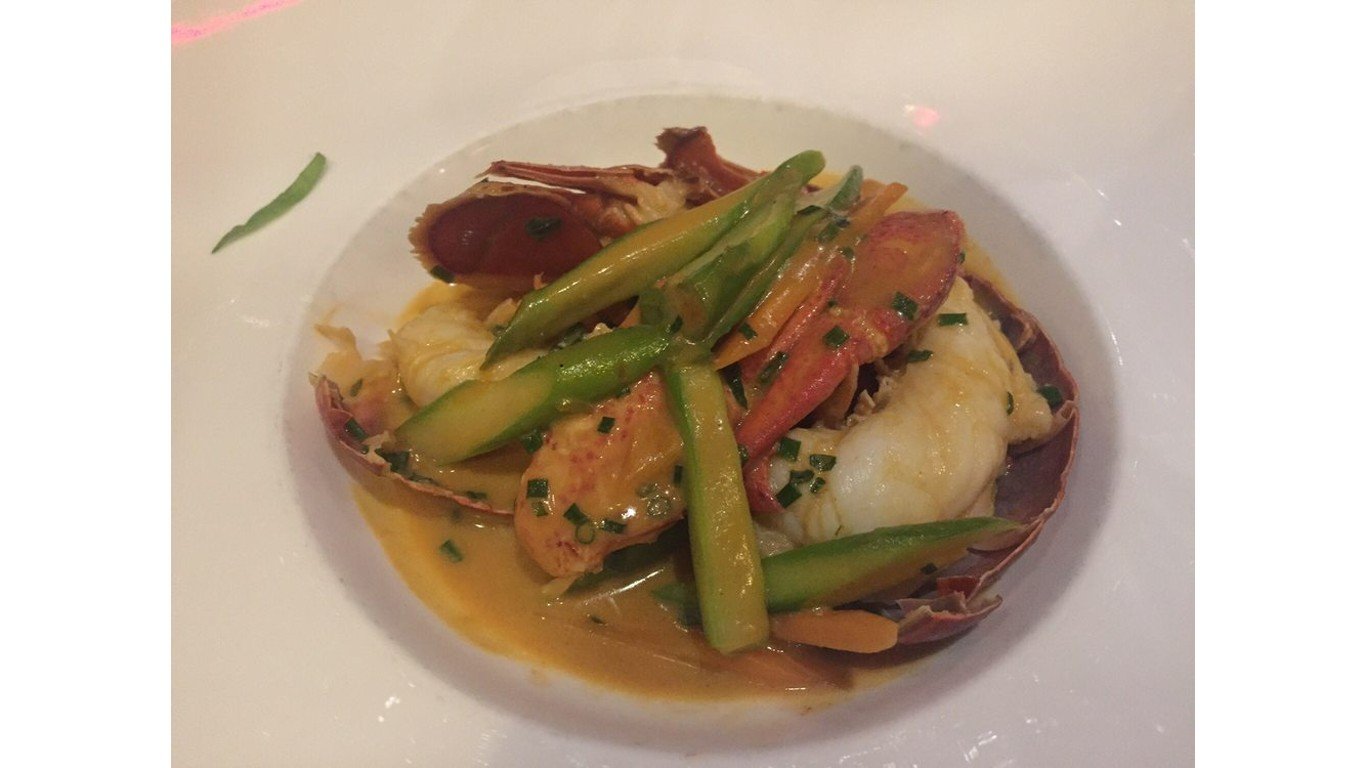
Lobster Newberg
> What it is: Lobster meat in a sauce of butter, cream, cognac, sherry, and eggs
> Where it originated Probably Delmonico’s Restaurant, New York City (1876)
> Where to try it: Delmonico’s, New York City, New York
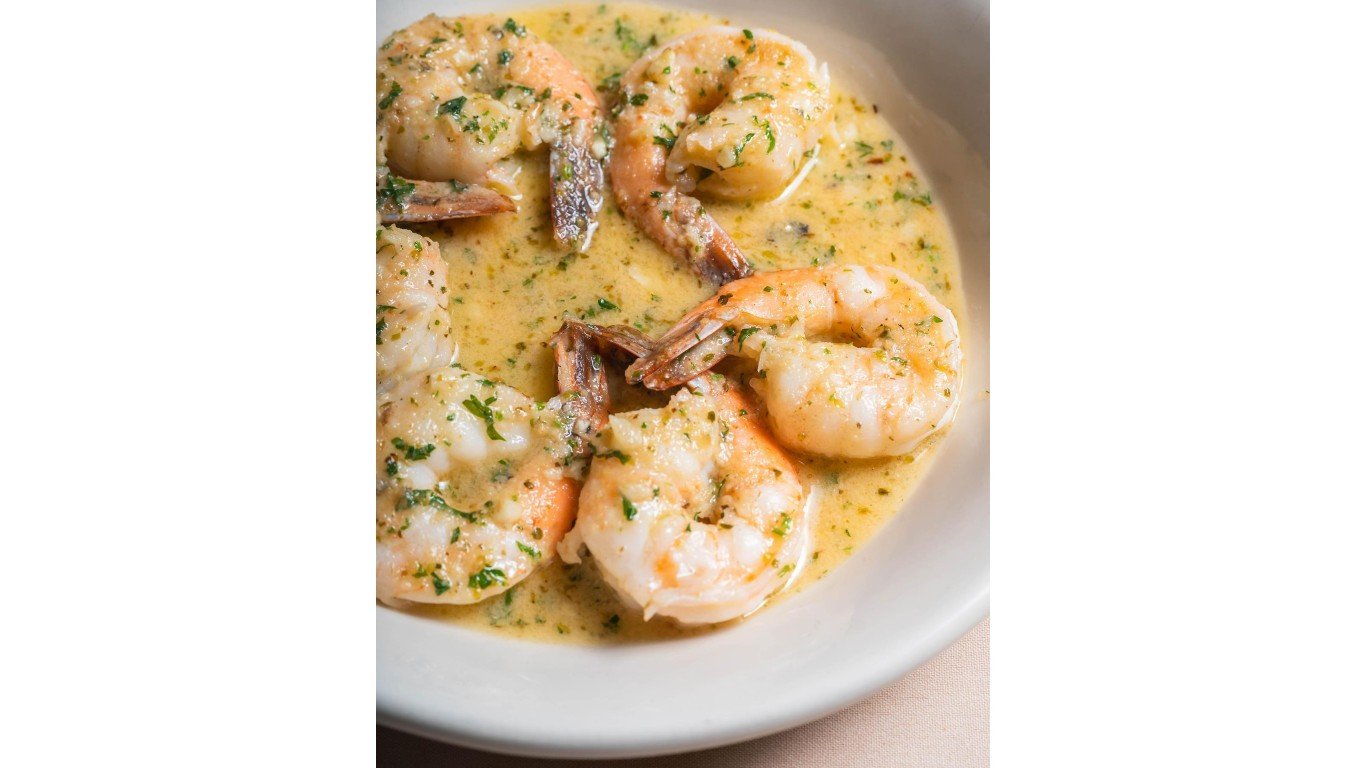
Shrimp DeJonghe
> What it is: Whole shrimp with garlicky, sherry-moistened bread crumbs
> Where it originated DeJonghe’s Hotel, Chicago (early 20th century)
> Where to try it: Gene & Georgetti’s, Chicago, Illinois
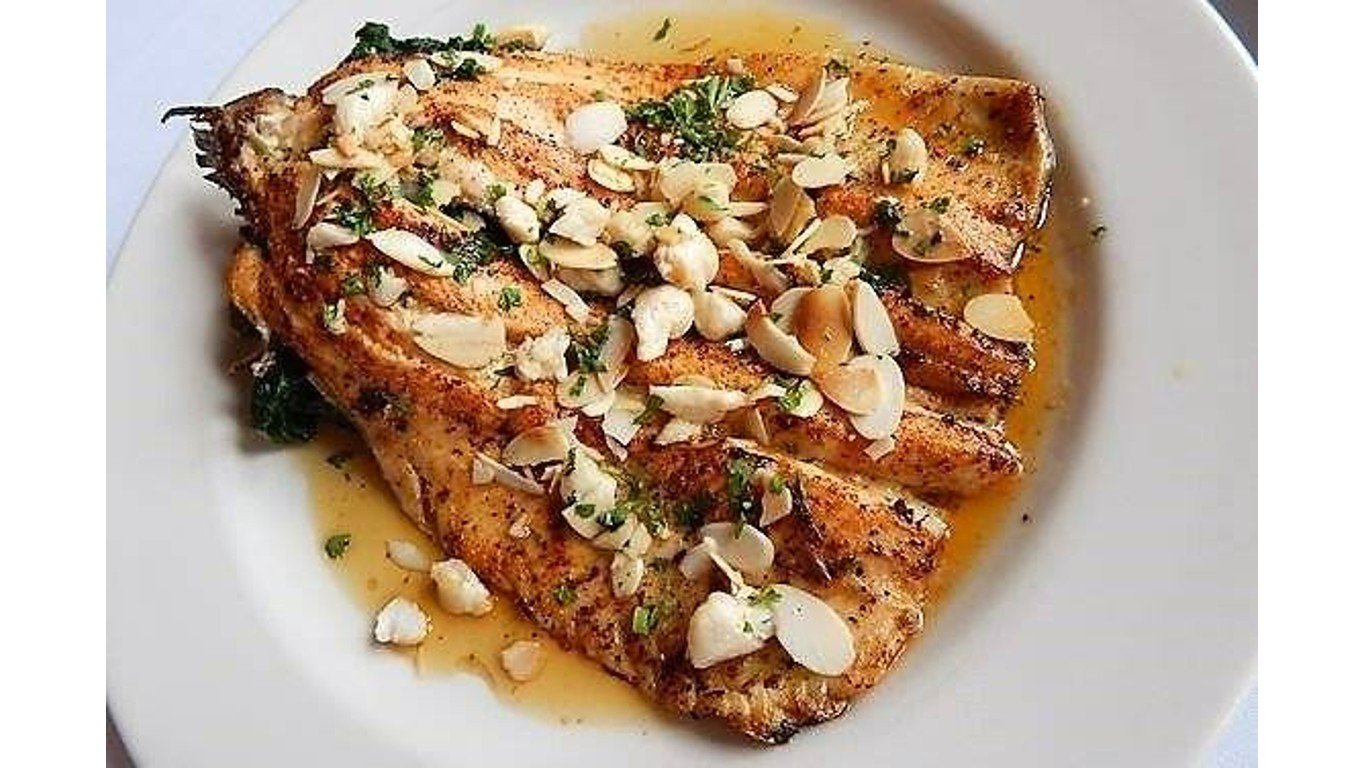
Trout amandine (or almondine)
> What it is: Pan-fried trout in a sauce of brown butter and slivered almonds
> Where it originated New Orleans
> Where to try it: Lavendou, Dallas, Texas
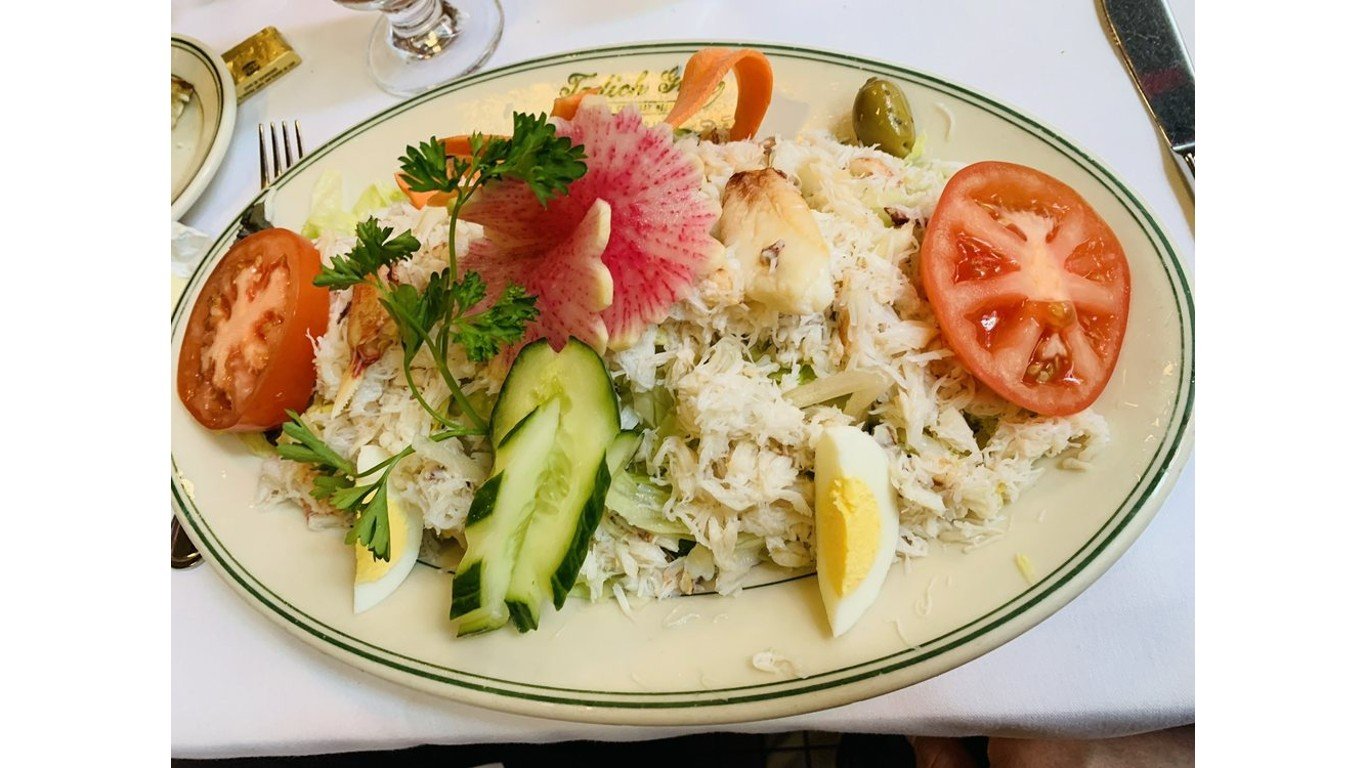
Crab Louie
> What it is: Crab meat with hard-boiled eggs, tomatoes, and asparagus with a Thousand Island-style dressing
> Where it originated Probably San Francisco (early 20th century)
> Where to try it: Tadich Grill, San Francisco, California
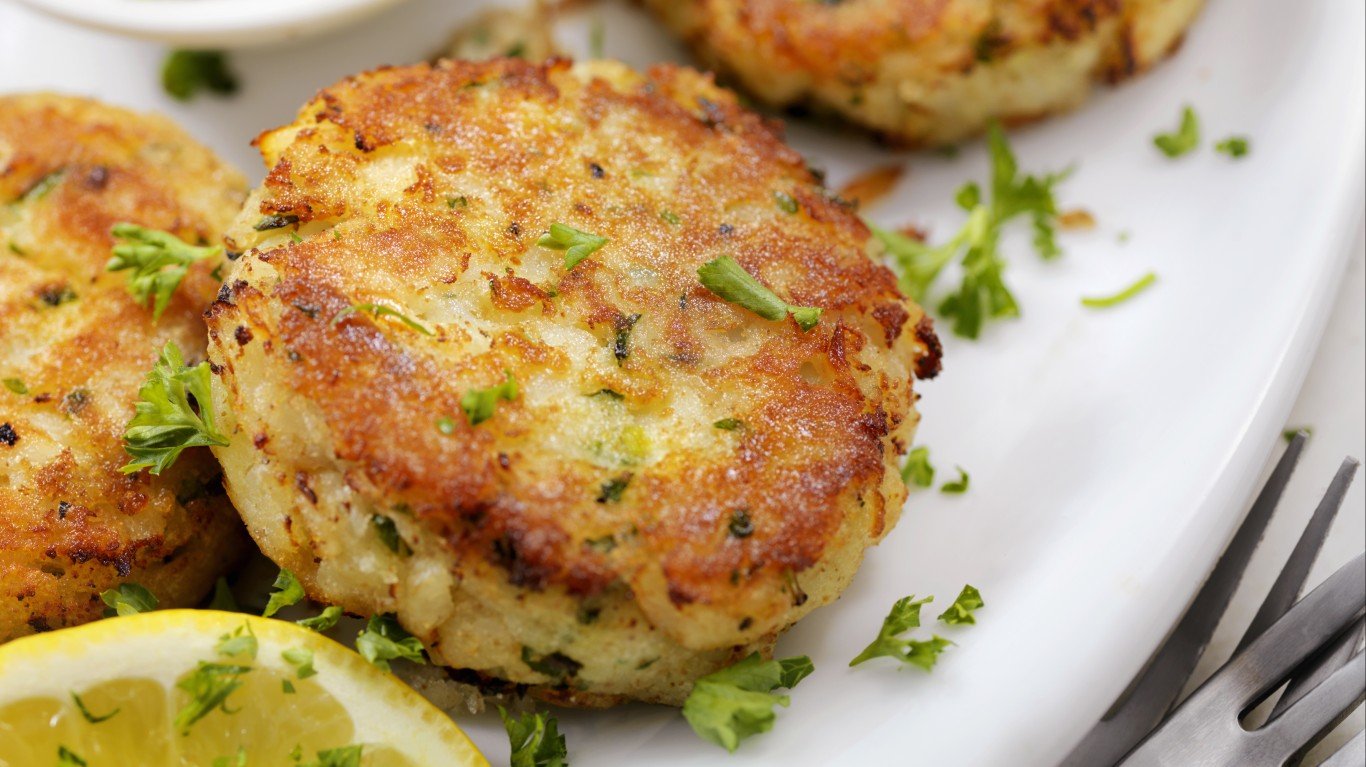
Crab cake
> What it is: Crab meat usually bound with bread crumbs and/or egg and sautéed or baked
> Where it originated Probably Native American cooking, but in the modern form, producer Crosby Gaige in “New York World’s Fair Cook Book” (1930)
> Where to try it: G&M Restaurant, Linthicum Heights, Maryland
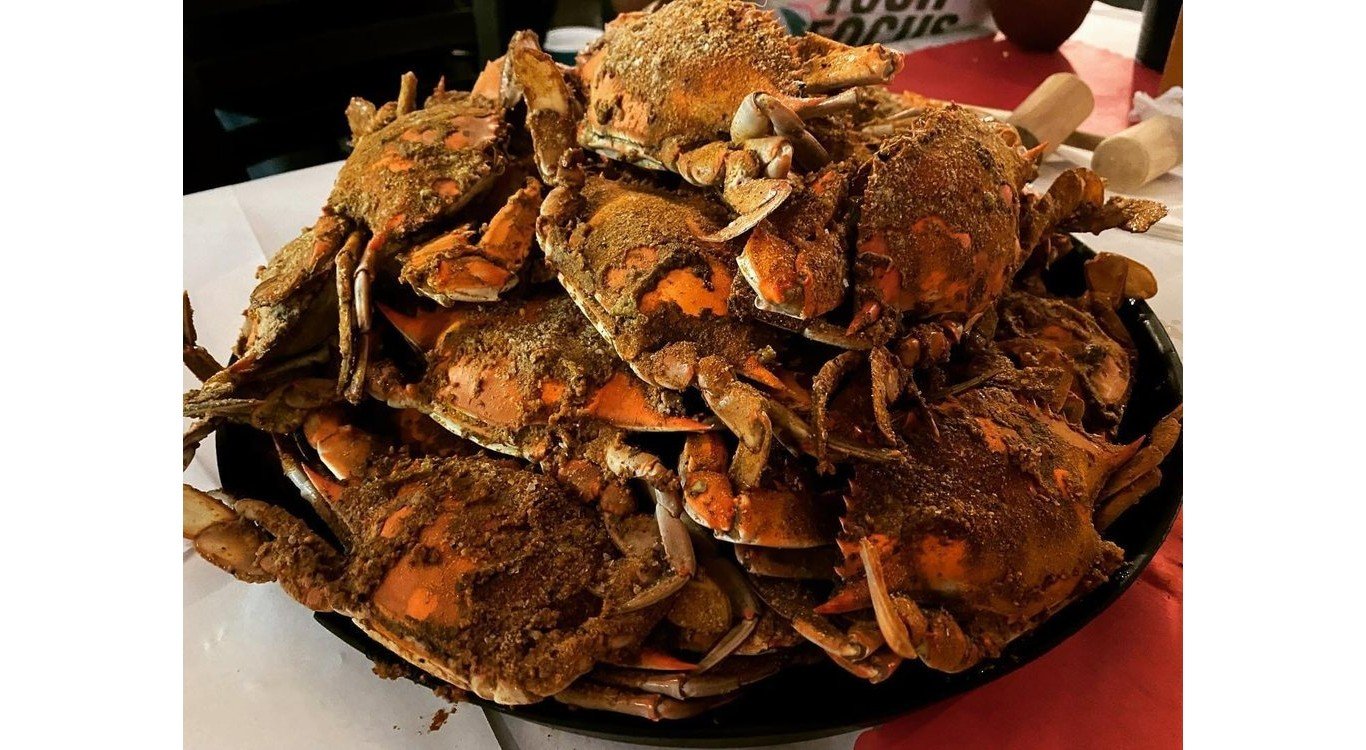
Cracked blue crab with Old Bay seasoning
> What it is: Whole crabs steamed with Old Bay, traditionally served with mallets for cracking shells on tables covered with butcher paper
> Where it originated Baltimore
> Where to try it: Schultz’s Crab House, Essex, Maryland
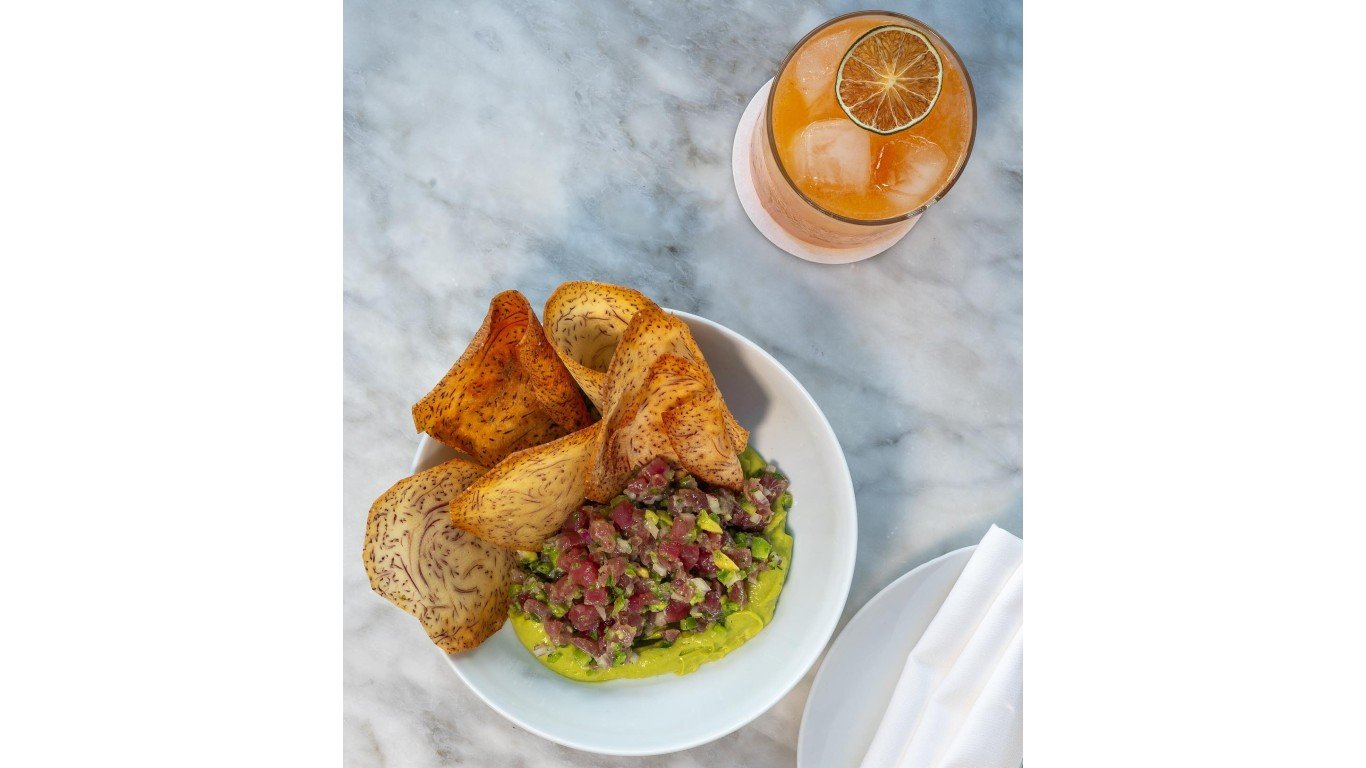
Tuna tartare
> What it is: Diced raw sushi-grade tuna with various condiments, often Asian-inspired
> Where it originated Le Duc, Paris (1975); introduced to America by chef Shigefume Tachibe, Chaya Brasserie, Los Angeles, California (1983)
> Where to try it: Olivetta, West Hollywood, California
Fried clams
> What it is: Deep-fried breaded whole-belly clams
> Where it originated Probably Woodman’s Restaurant, Essex, Massachusetts (1916)
> Where to try it: The Weatherdeck, West Chatham, Massachusetts (seasonal)
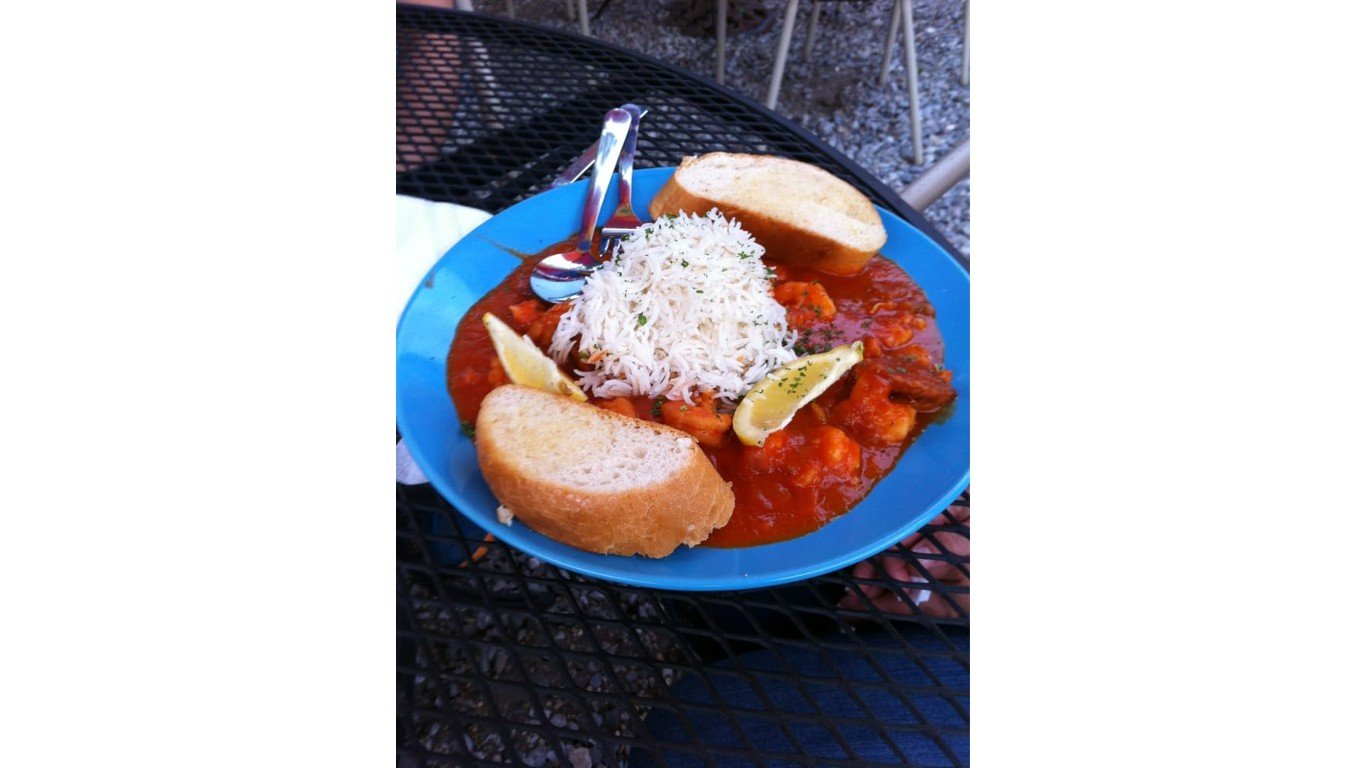
Shrimp Creole
> What it is: Shrimp in a spicy sauce including celery, bell pepper, and scallion or onion
> Where it originated Louisiana
> Where to try it: Darwell’s Cafe, Long Beach, Mississippi
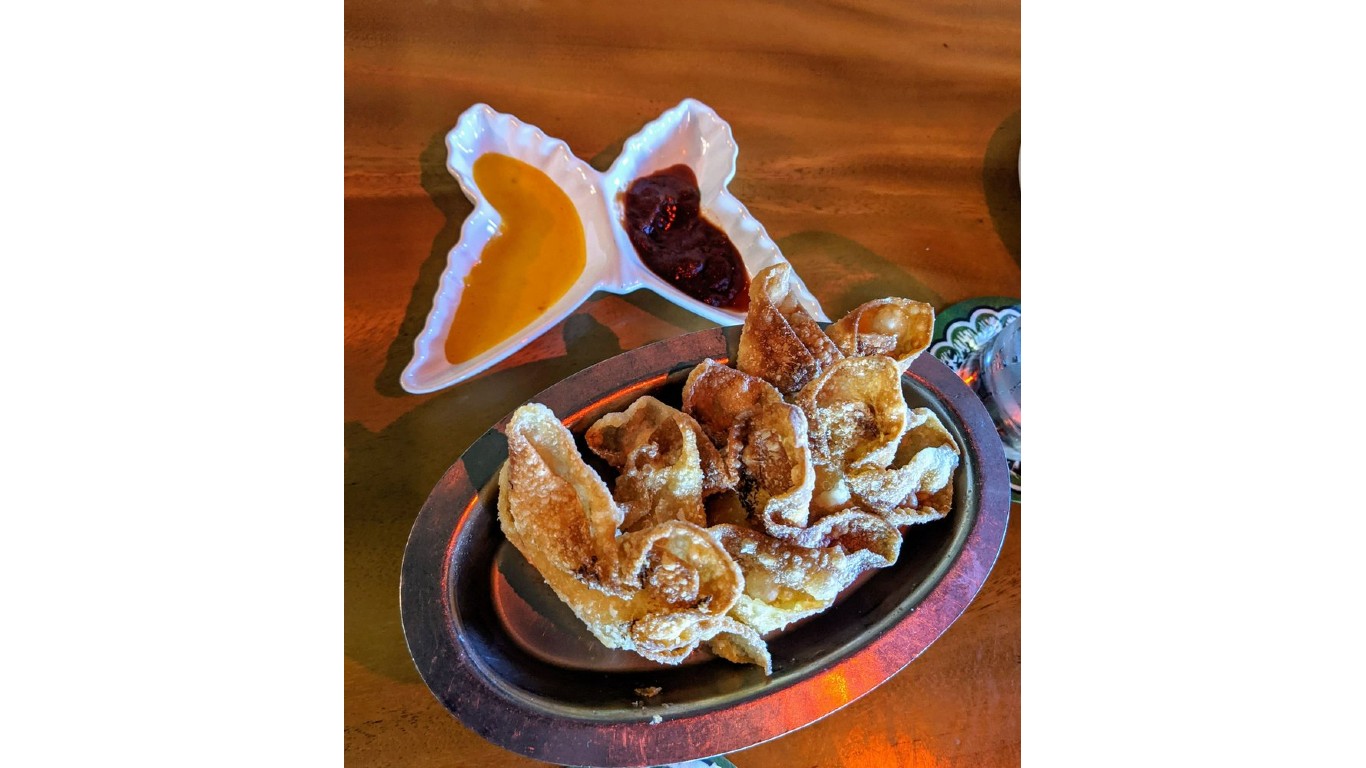
Crab Rangoon
> What it is: Crab meat and cream cheese deep-fried in wonton wrappers
> Where it originated Trader Vic’s, San Francisco (circa 1956)
> Where to try it: Trader Vic’s, Emeryville, California
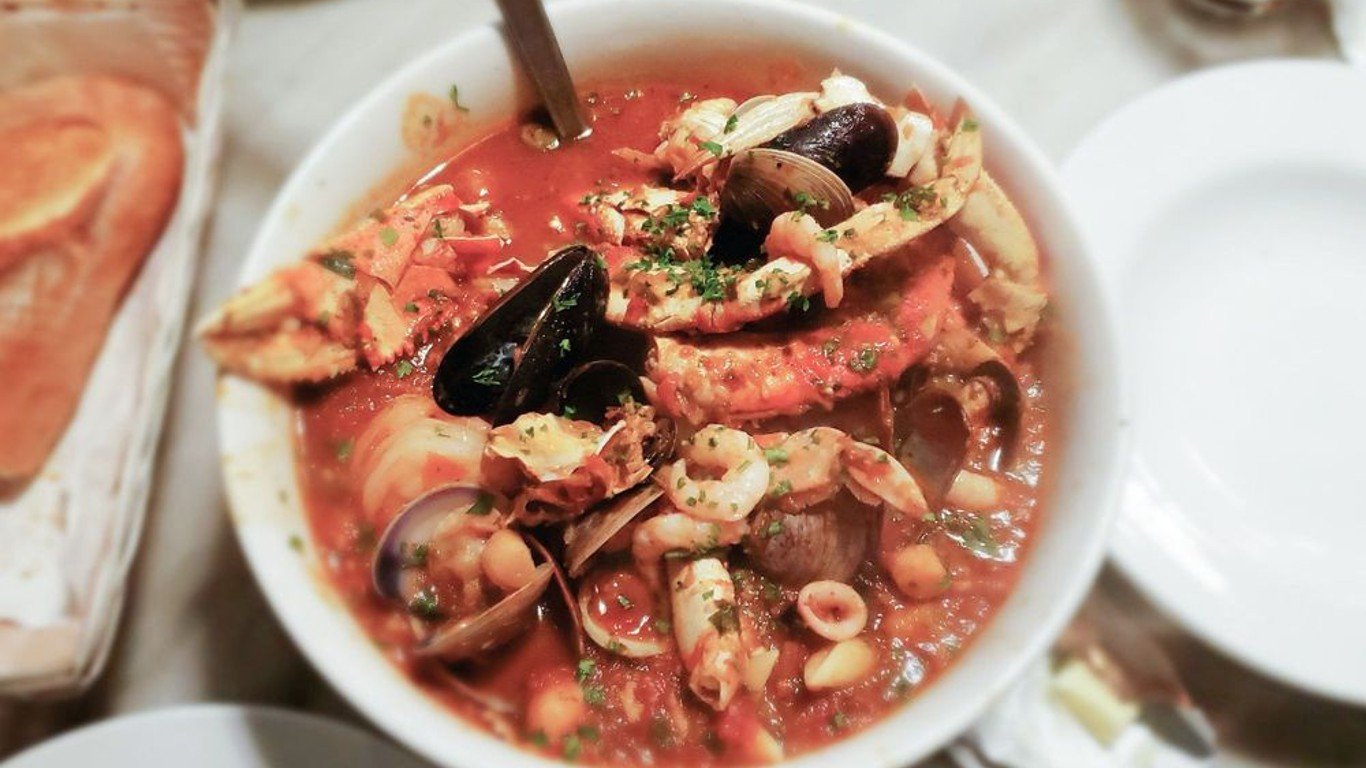
Cioppino
> What it is: Italian-American seafood stew with wine and tomatoes, traditionally including Dungeness crab
> Where it originated San Francisco (late 19th century)
> Where to try it: Sotto Mare, San Francisco
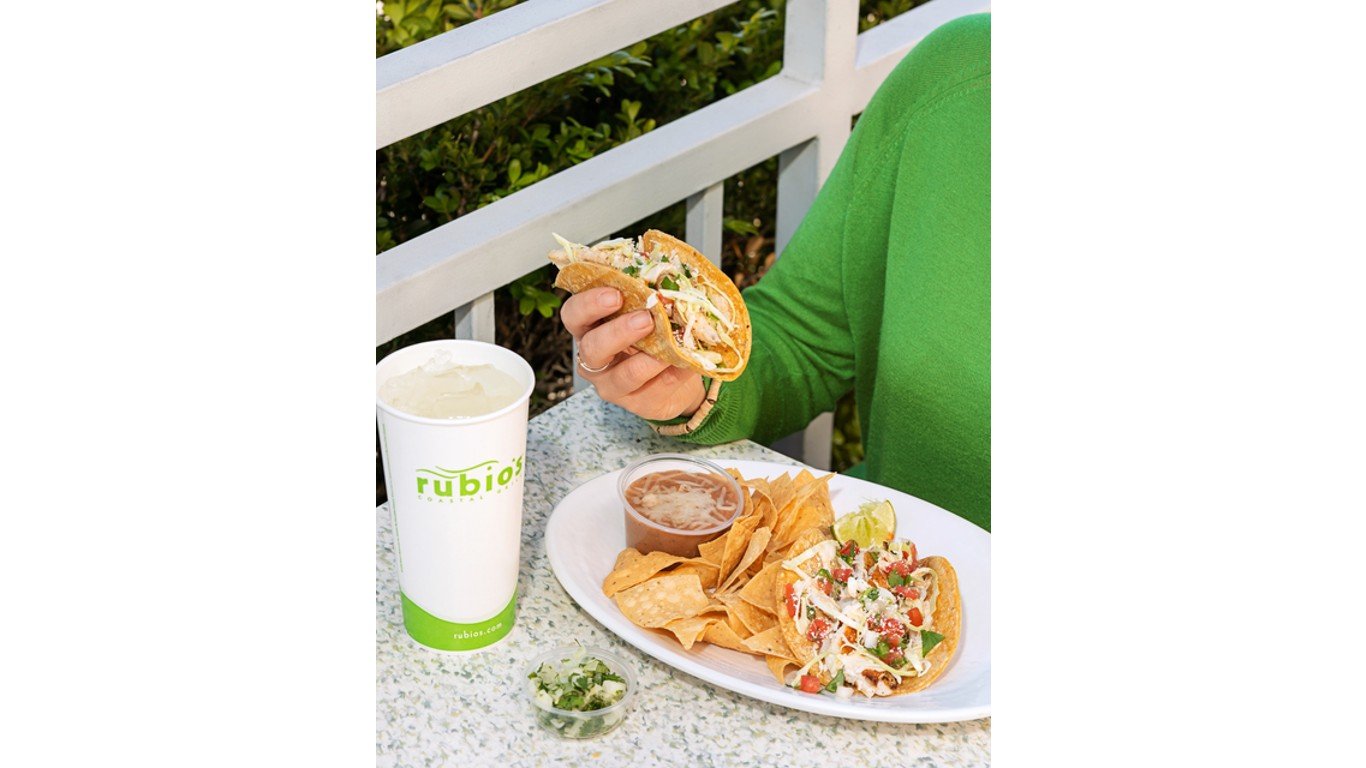
Baja fish tacos
> What it is: Deep-fried pieces of white-fleshed fish in soft corn tortillas typically with shredded cabbage, avocado sauce, and white or hot sauce
> Where it originated Ensenada or San Felipe, Mexico (1950s); popularized in U.S.: Mission Beach, California (from 1983)
> Where to try it: Rubio’s Coastal Grill, more than 150 locations in California, Arizona, Nevada, and New York
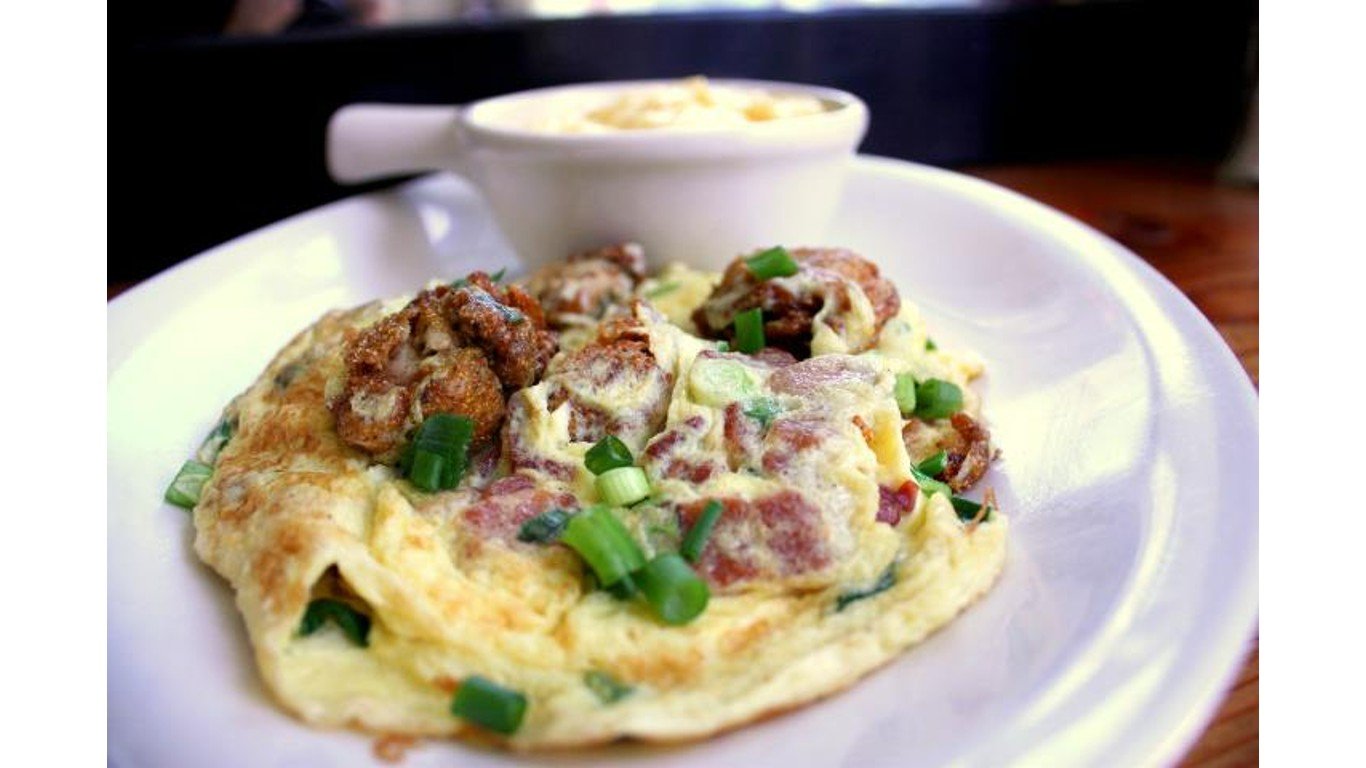
Hangtown fry
> What it is: Omelette with oysters and bacon
> Where it originated Placerville, California (1850s)
> Where to try it: Brenda’s French Soul Food, San Francisco, California (brunch only)

Baked scrod
> What it is: Filets of small cod or haddock baked in butter
> Where it originated Boston (1850s)
> Where to try it: Wimpy’s Restaurant & Market, Osterville, Massachusetts
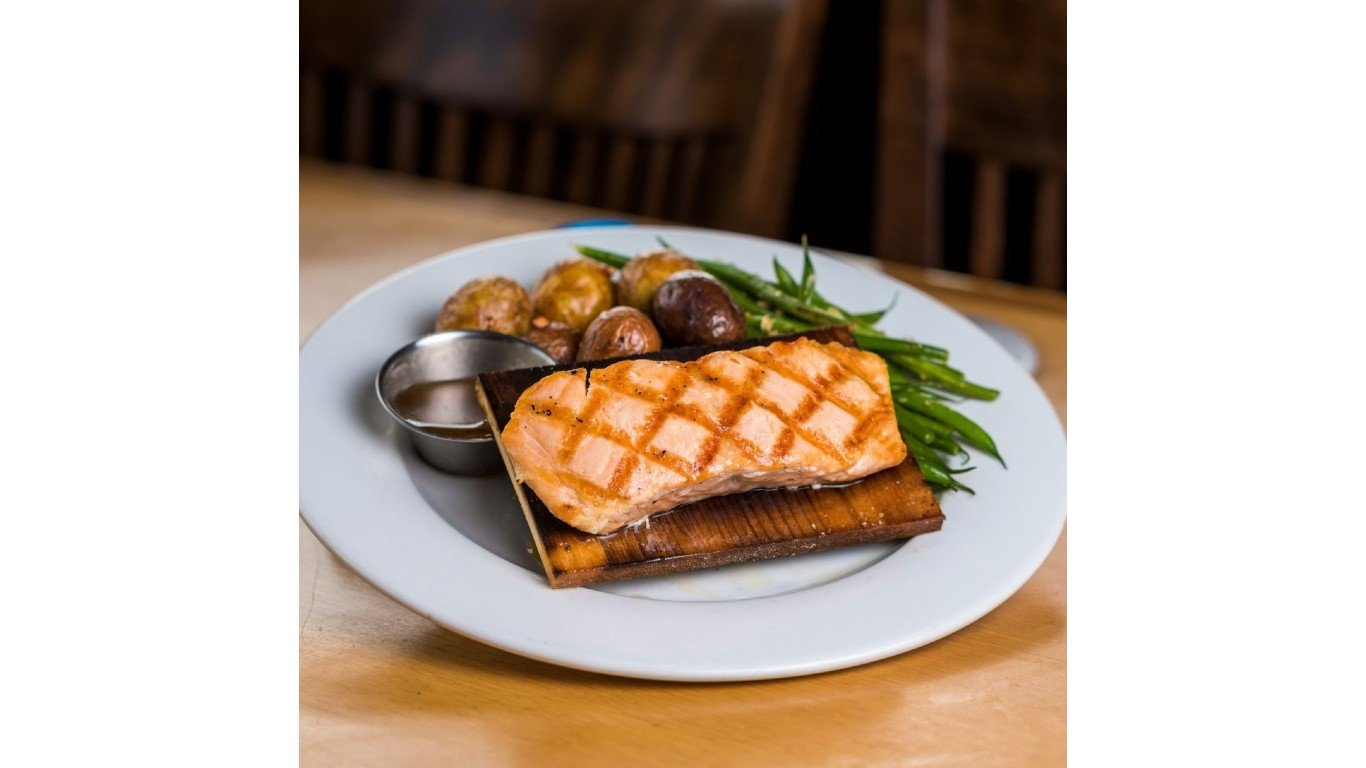
Cedar-plank salmon
> What it is: Salmon filets or a whole side of salmon grilled or roasted on a cedar plank
> Where it originated Indigenous peoples of the Pacific Northwest (possibly thousands of years ago)
> Where to try it: The Cedars Floating Restaurant, Coeur d’Alene, Idaho
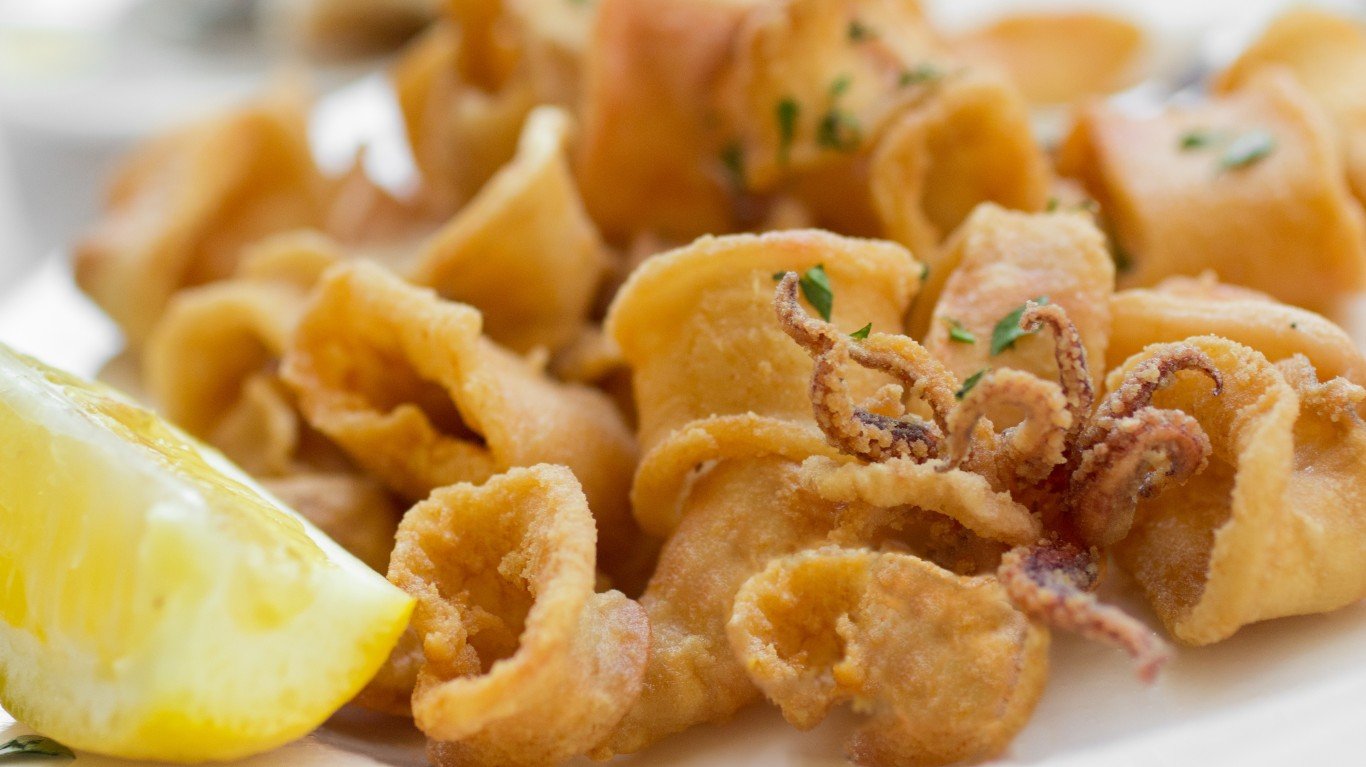
Fried calamari
> What it is: Rings of squid and their tentacles, battered and deep-fried (often served with marinara sauce for dipping)
> Where it originated Mediterranean countries (centuries ago); popularized in U.S., location unknown (circa 1975)
> Where to try it: Campiello, Naples, Florida, and Eden Prairie, Minnesota
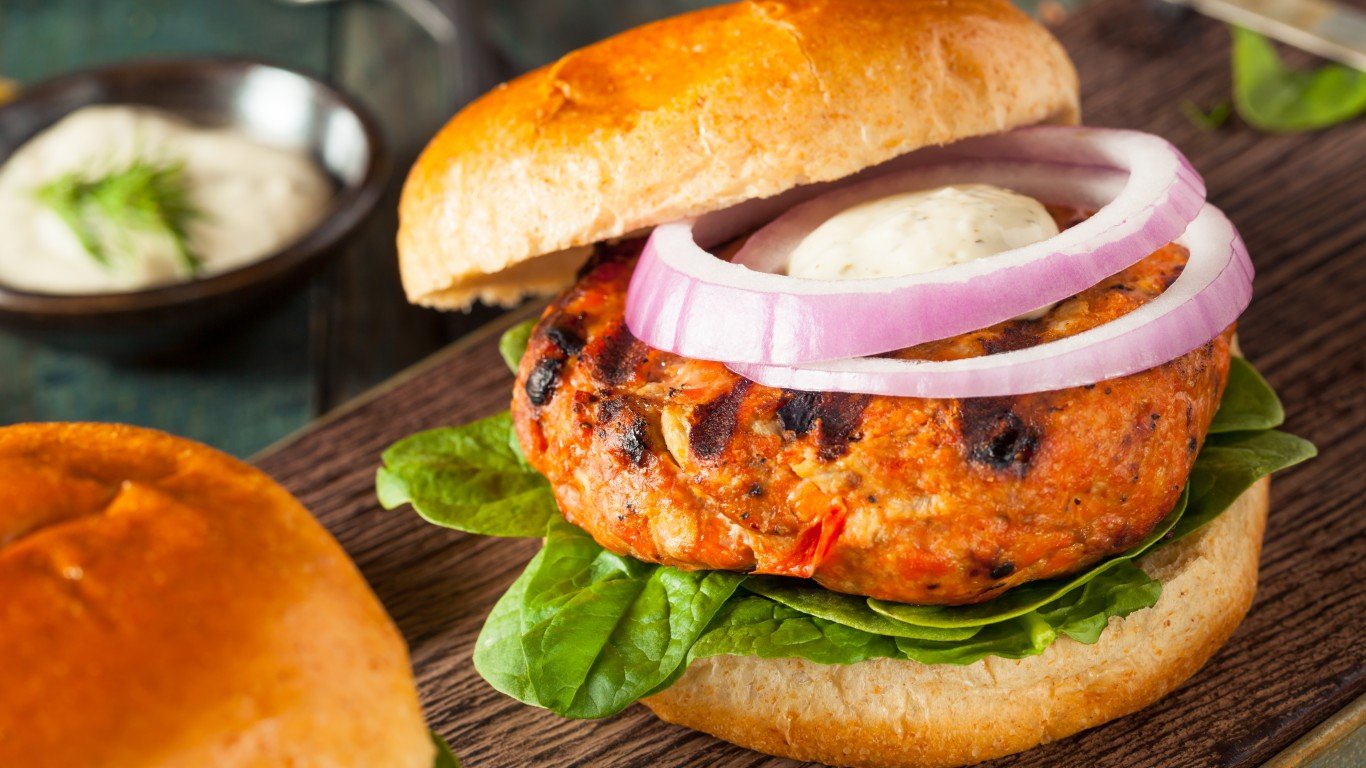
Salmon burger
> What it is: Salmon fishcake, bound with eggs, flour, and/or bread crumbs and formed into a patty, usually served on a bun with lettuce and tomato
> Where it originated Alaska (?); variation on fish croquettes invented in France (mid-19th century)
> Where to try it: Blue Star Café and Pub, Seattle, Washington
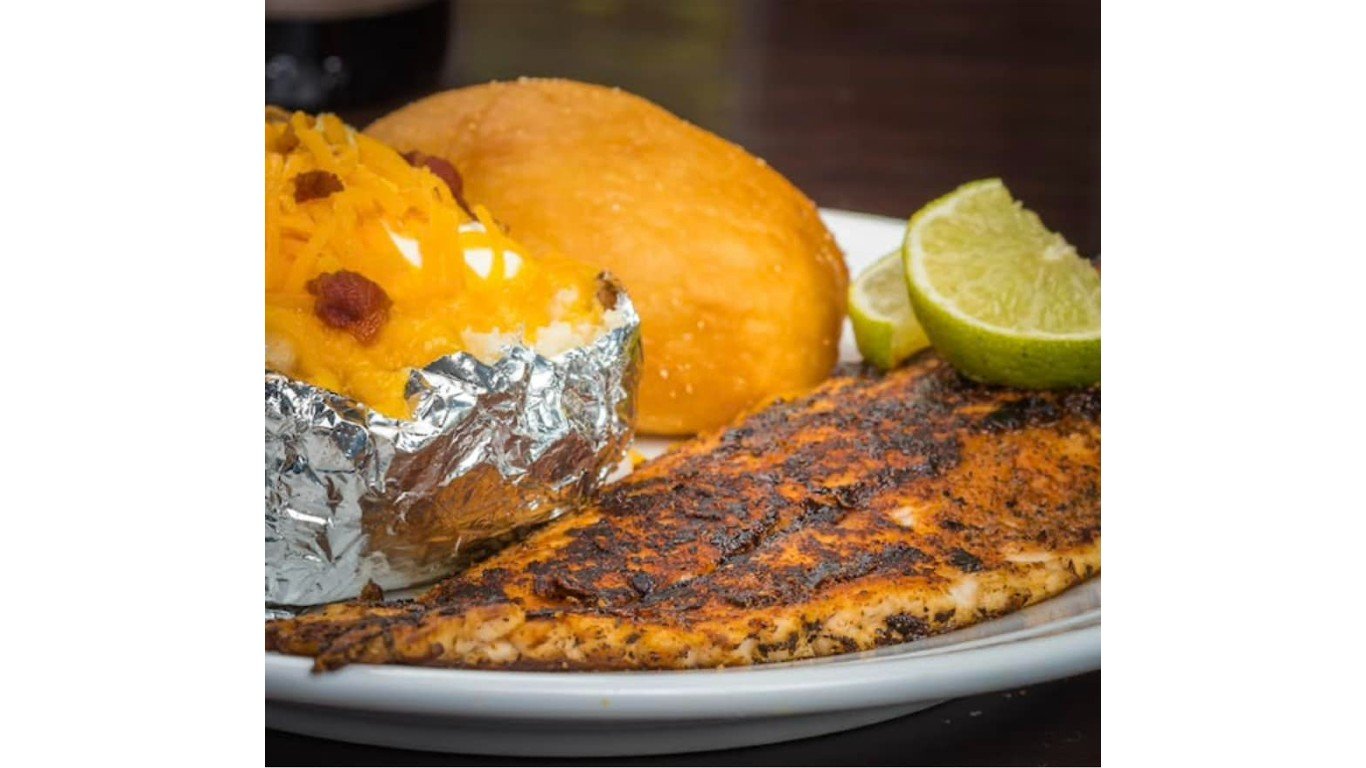
Blackened redfish
> What it is: Redfish filet coated in spices and blackened in butter in a searing-hot skillet
> Where it originated Paul Prudhomme, K-Paul’s Louisiana Kitchen, New Orleans (1980s)
> Where to try it: Nina P’s Café, Lake Charles, Louisiana

